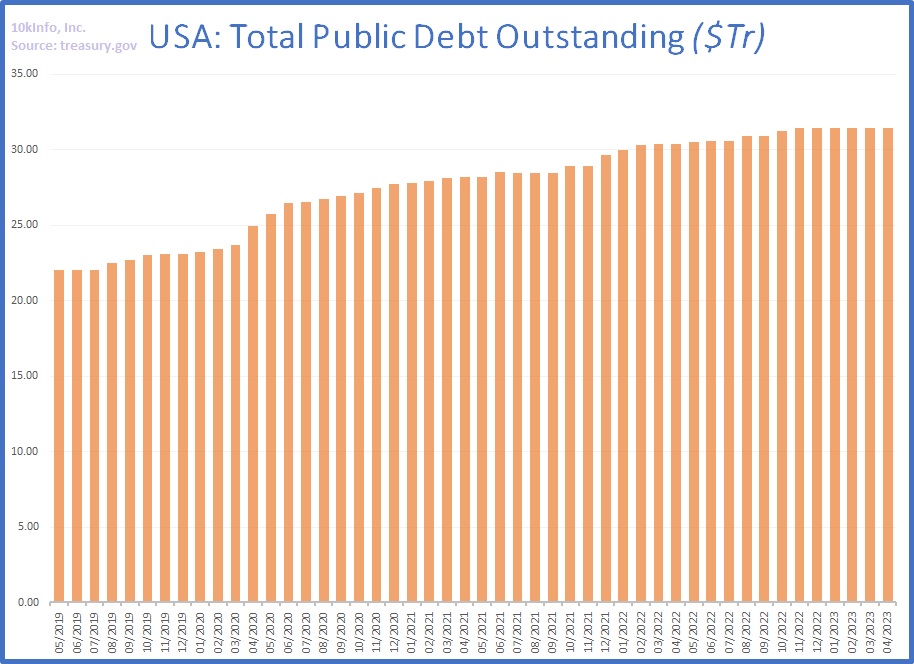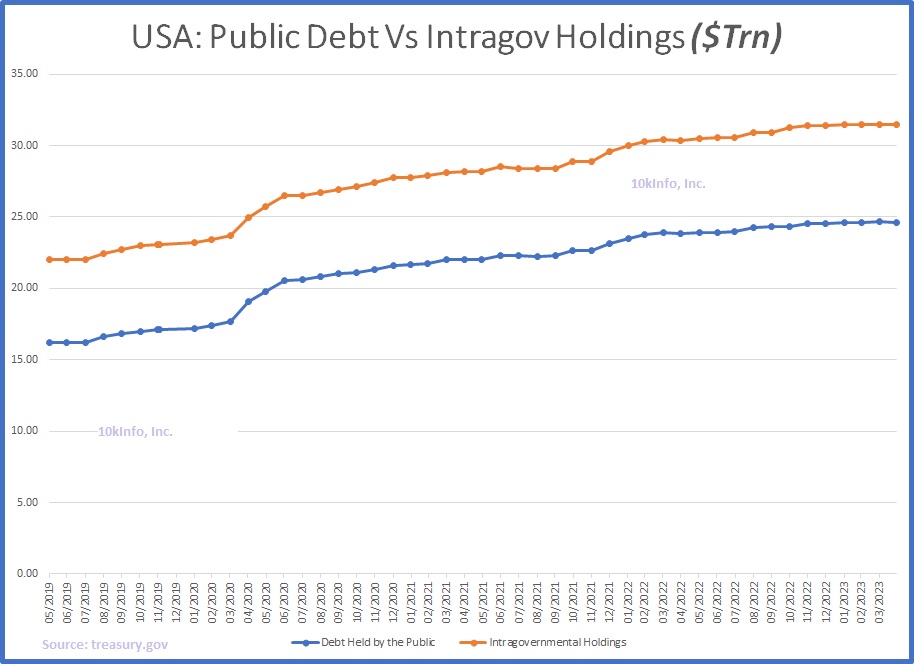The agreement is a mixed bag for Democrats and Republicans and needs to pass Congress
President Joe Biden has asked Congress to vote on a deal to suspend the government borrowing limit. The temporary removal of the debt ceiling will prevent a default on US debt repayments that could have been catastrophic for the US and world economies. Biden’s Democratic party and Republicans led by House Speaker Kevin McCarthy were locked in long drawn-out talks to avert a default. GOP has a slender majority in the House and can block any legislation even if the Democrat-dominated Senate passes it.
What is the US debt ceiling deal?
Sponsored
The agreement was accepted by both parties on May 28 night. The deal, if accepted by Congress, will allow the federal government to borrow money until well after the 2024 presidential election due in November.
Debt ceiling suspended until 2025
The current debt ceiling of $31.46 trillion has been kept in abeyance so that the administration can borrow more to pay its bills and continue to deficit finance its operations.
This would ensure payments to federal employees, the military, Social Security and Medicare, as well as interest on the national debt and tax refunds, will continue unhindered.
Although initial media reports were about talks to raise the limit further from $31.46 trillion, the new deal temporarily removes the limit until 2025. This eliminates two tough gateways at least until 2025. On the one hand it allows the administration to meet the scheduled expenses until for this year and next year. On the other, it will prevent another round of acrimonious debt negotiation in the midst of potentially heated presidential election campaign.
World markets must be feeling even more relieved as they are struggling to manage a soft-landing during the imminent global recession. A US default would have elevated the stakes for that task even further as interest rates and inflation would have rocketed.
Cap on spending except for defense
The loan limit gone does not mean the government has a blank check to push up spending. There will be an overall cap on the total spending bill for ten years, except for defense. This would mean drastic cuts under many heads while the administration will be able to fund the war against Russian expansionism by aiding Nato and supporting Ukraine.
Apparently, the agreement is to keep non-defense spending flat next year, and allow 1% rise in 2025.
On the other hand, the defense expenditure could rise to $886 billion, marking a 3% rise in 2023.
An AP news article pegs the White House estimate of spending cut to be at least $1 trillion, although official calculations are not yet out.
Military veterans’ medical bills
The agreement accepts President Biden’s suggestion to increase the funding for medical care of military veterans.
A BBC analysis by Nomia Iqbal says both sides are claiming victory. While the White House maintains these cuts are not significant. The defense spending does rise but it's below the rate of inflation. It doesn't meet the demands of the more hawkish Republicans, BBC says.
Unspent COVID funds
The deal defers to the Republican demand to return the unspent COVID funds since public health emergency was declared over in May. The Congressional Budget Office suggests this could amount to about $30 billion.
Democrats further left of the spectrum fear the deal could hamper public health programs. The BBC report shows health spending would have been an easier matter for President Biden to give up than the other Republican priorities like Medicaid work requirements.
Changes in welfare
The deal meets long-standing Republican demand to tighten the norms for distribution of welfare benefits including the condition that able-bodied recipients would have to work to get food and healthcare help. Democrats were adamant this should not be on the table.
Republicans have ensured tweaking of the health programs like Supplemental Nutrition Assistance Program (SNAP) and Temporary Assistance for Needy Families (TANF) while leaving Medicaid (health coverage for poor Americans) untouched in the deal. The maximum age for the work requirement for SNAP has been raised to 54 from 50.
The BBC analysis says the White House should be relieved that it gained exceptions to the food stamp requirements for veterans and the homeless. But Republicans can take credit for the stricter work requirements.
Funds to enforce tax rules on wealthy Americans
However, Democrats would be happy for securing $60 billion in Internal Revenue Service (IRS) funding to enforce the tax code in last year's Inflation Reduction Act on the richest that sought $80-billion additional funding. McCarthy gave in on this point although the Republican far right have been campaigning to dump the additional funding. Their claim was that it would be used to hire agents to audit Americans while IRS has maintained it would also be used to modernize the system. President Biden’s concession was to divert $20 billion from the corpus to other non-defense spending.
Project permits
The Biden administration will make it easier to get licenses for fossil fuel and renewable energy projects. The changes would involve streamlining the environmental review process. Democratic Senator Joe Manchin of West Virginia has also been a persistent campaigner for the change.
BBC sees this concession as both win and loss for the White House. Republicans have been demanding more energy pipelines and fossil fuel projects. To the extent that such projects will get faster environmental clearance Republicans can claim their share of triumph. Democrats are not averse to streamlining the process of granting environmental clearance to investors. However, their push for clean energy could rankle with the whole process.
What the deal omitted
Republicans’ demand for rescinding Biden’s plan to forgive student debt did not find an echo in the deal as finalized. The administration's student debt case is already in the Supreme Court. But the bill does require the Biden administration to follow through with a plan to end the current pause caused by the COVID pandemic. Democrats clean air agenda and Republicans push for tax cuts are not reflected in the deal.
Also read:
Sponsored






